Minimizing your keyboard layout is a slippery slope. A few months ago, I built the Ferricy, a 34-key-split-ortho-ergo keyboard. The Ferricy is a fork of the Ferris Sweep MX Bling.
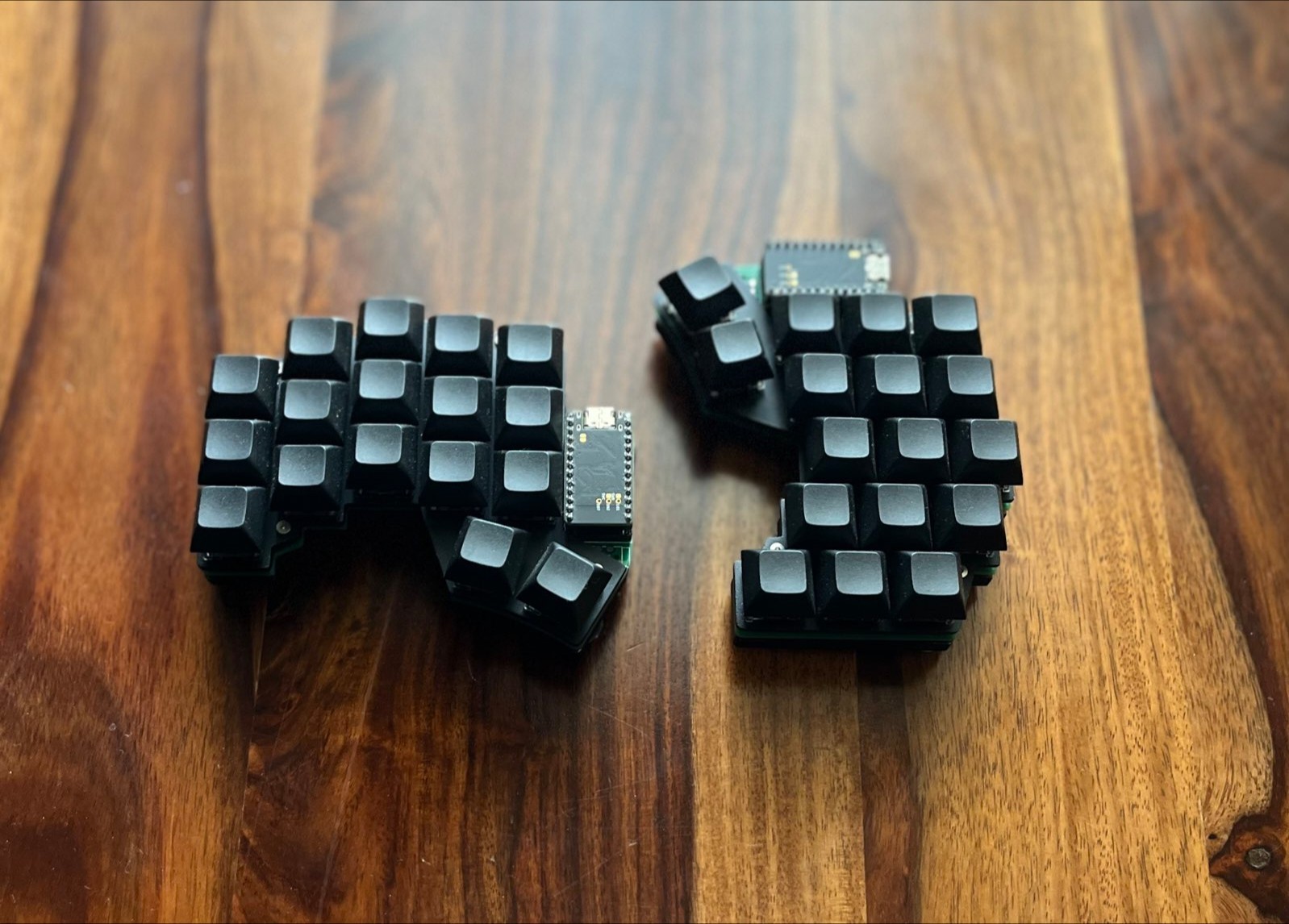 The Ferricy, designed by icyphox
The Ferricy, designed by icyphox
My daily use consists of a bit of prose and a lot of program, my layout has evolved accordingly.
 Colemak with no mods
Colemak with no mods
The base layer contains alphabets, four symbols and four whitespace keys:
- Alphas: Stock Colemak, with no modifications whatsoever
- Symbols: . , / ;
- Whitespace: tab, space, enter, backspace (from left to right)
Keyboard input is complex and it is impossible to skirt around it. You can either use a keyboard with enough keys to supply all possible inputs (a mechanical burden), or you can use firmware to supply all possible inputs (a cognitive burden). Layers are a cognitive burden.
I use 3 layers, heavily inspired by Miryoku, but tuned for programming. Excluding the base Colemak layer:
- NAV: activated on holding space (left thumb)
- NUM: activated on holding tab (left thumb)
- SYM: activated on holding enter (right thumb)
The NAV Layer
As the name suggests, this layer is focused on navigation. Arrow keys and the likes.
 NAV, on holding
space
NAV, on holding
space
Using Vim and Colemak means you lose out on HJKL navigation. However, on activating the NAV layer, the right home-row is converted into arrow keys. In essence, by holding space, I can navigate Vim with the home-row, or Firefox, or my PDF reader. I no longer need to look for software that allows Vim navigation keys, because it is baked into the firmware!
My Vim motions are not limited to HJKL. In fact, my Vim motions are rarely HJKL. I tend to use } (next paragraph) and ) (next sentence) more often. As a result, these have found their way into my NAV layer, over the likes of PgDown and End. Having brackets at my index and middle fingers is nice for programming too.
The SYM Layer
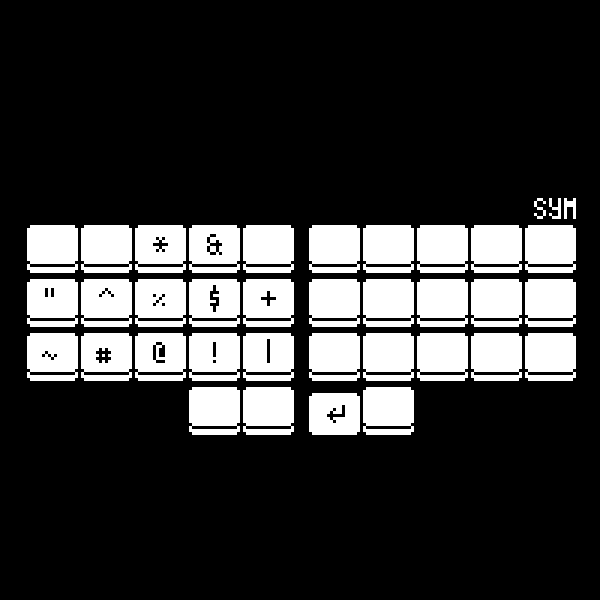 SYM, on holding
enter
SYM, on holding
enter
This layer contains all the symbols that you would find by hitting Shift and a key on the number row. Probably noteworthy to Vim users: the symbols are arranged in the form of a mirrored numpad for exactly one reason: to move $ to the left of ^. It has always annoyed me that $ moves the cursor to the end of the line and ^ moves it to the beginning, but their position on a typical number row are reversed, 4 comes before 6.
The NUM layer
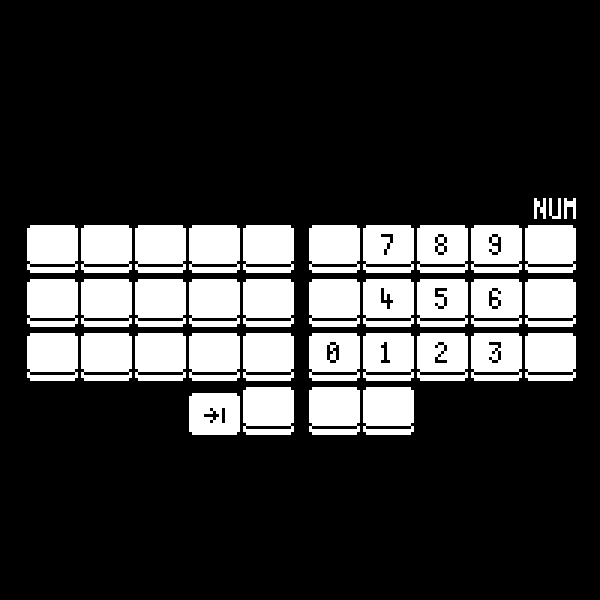 NUM, on holding
tab
NUM, on holding
tab
Another deviation from Miryoku, the numpad just feels right on my right hand.
If you have been paying close attention, you might have noticed that escape didn’t make it to any layer. escape is too crucial to put on a non-base layer, but at the same time, not as important to deserve a place on the base layer. That is where ZMK’s combos come in. Combos let you tap any number of keys, and combine them to form a single key. I have combos set up for underscore, minus, escape and caps-word (more on caps-word later):
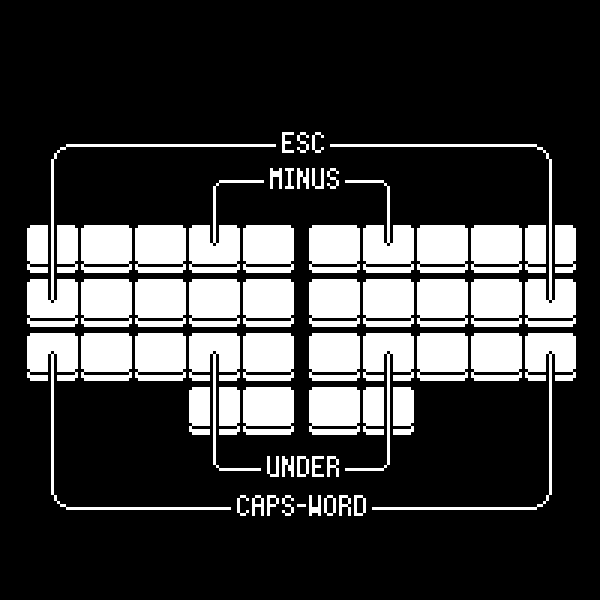 Combos are almost piano-like
Combos are almost piano-like
Inherited from Miryoku, I have home-row mods for activating Super, Alt, Shift, Ctrl and Hyper (Ctrl + Shift + Alt + Super). The idea is to send T on tap and Ctrl on hold. Home-row mods are fairly popular, so I’ll not go into the details.
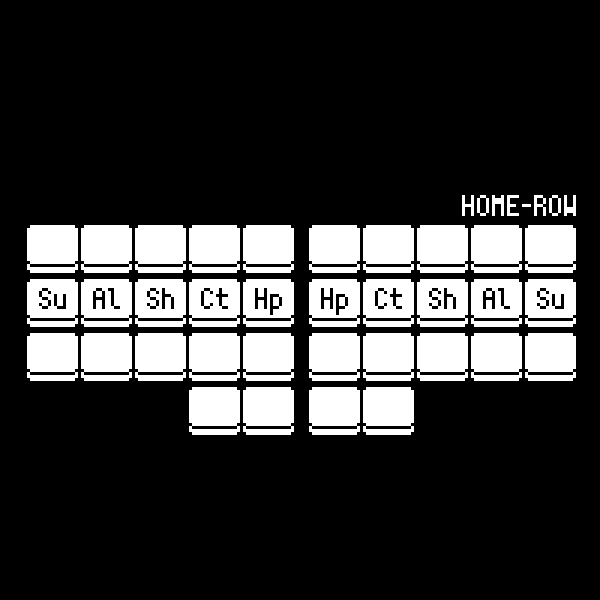 Super, Alt, Shift, Ctrl, Hyper; on the
left half, and mirrored on the right half
Super, Alt, Shift, Ctrl, Hyper; on the
left half, and mirrored on the right half
Hyper bridges the gap between firmware and software. You can never configure key combination that, opens Firefox, for example, through firmware alone. However, with the Hyper key, and some sxhkd magic, you can emulate that. Pressing Hyper + F on a keyboard is just two keys, but the key codes sent are Ctrl + Shift + Alt + Super + F. That key combination is not intercepted by any application as a shortcut, except for the following sxhkd stanza:
Alternatively, you can intercept unused F keys: F13 through F24.
Home-row mods are mirrored on each half because it would be impossible to hit Ctrl + T if not; they lie on the same key.
Caps-word is a clever caps-lock, built into ZMK. Typing out constants such as PORT with home-row mods would look like this:
- hold e (shift) on left hand, and tap p on right hand
- hold e (shift) on left hand, and tap o on right hand
- hold s (shift) on right hand, and tap r on left hand
- hold s (shift) on right hand, and tap t on left hand
This hold-alternate-hold dance gets tiring quickly. With caps-word, however:
- toggle caps_word
- type out p, o, r, t
- hit a break character (space, enter will do)
- continue
Caps-word automatically disables capitalization upon encountering a breaking character, (which are space, enter or any modifier, by default) right in the firmware!
34-keys has been reasonably comfortable to use, for both prose and program. My palms do not move across the desk at all, as I reach for keys. I mostly write Rust and Bash, and my layout has evolved to accomodate special characters from their grammars (angled brackets and hyphens, specifically). If you are on a similar journey, I would suggest focusing on accuracy and comfort over speed. Speed comes with time.
.png)

![The Farmer Was Replaced [video]](https://www.youtube.com/img/desktop/supported_browsers/opera.png)
